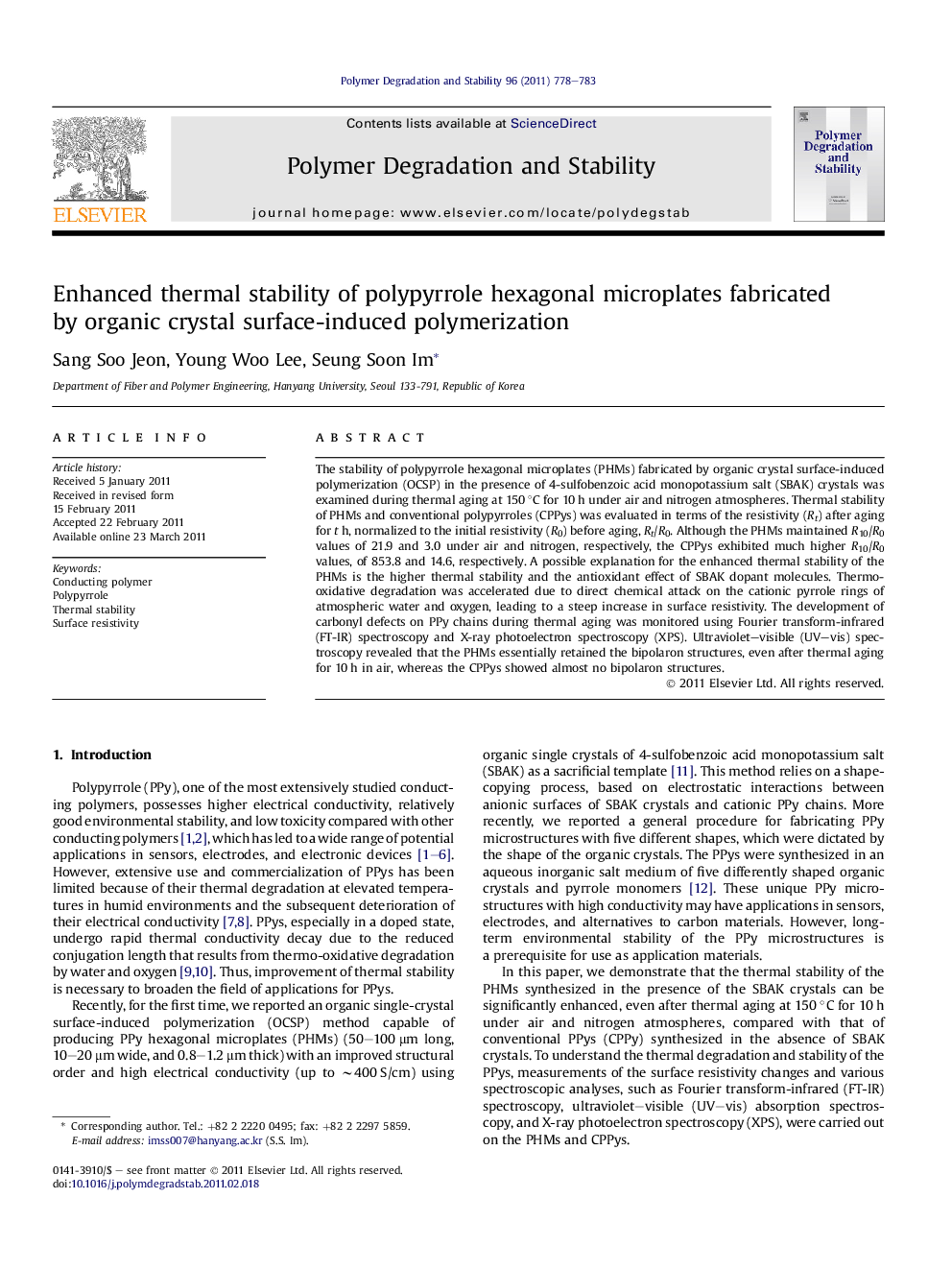| Article ID | Journal | Published Year | Pages | File Type |
|---|---|---|---|---|
| 5202682 | Polymer Degradation and Stability | 2011 | 6 Pages |
Abstract
The stability of polypyrrole hexagonal microplates (PHMs) fabricated by organic crystal surface-induced polymerization (OCSP) in the presence of 4-sulfobenzoic acid monopotassium salt (SBAK) crystals was examined during thermal aging at 150 °C for 10 h under air and nitrogen atmospheres. Thermal stability of PHMs and conventional polypyrroles (CPPys) was evaluated in terms of the resistivity (Rt) after aging for t h, normalized to the initial resistivity (R0) before aging, Rt/R0. Although the PHMs maintained R10/R0 values of 21.9 and 3.0 under air and nitrogen, respectively, the CPPys exhibited much higher R10/R0 values, of 853.8 and 14.6, respectively. A possible explanation for the enhanced thermal stability of the PHMs is the higher thermal stability and the antioxidant effect of SBAK dopant molecules. Thermo-oxidative degradation was accelerated due to direct chemical attack on the cationic pyrrole rings of atmospheric water and oxygen, leading to a steep increase in surface resistivity. The development of carbonyl defects on PPy chains during thermal aging was monitored using Fourier transform-infrared (FT-IR) spectroscopy and X-ray photoelectron spectroscopy (XPS). Ultraviolet-visible (UV-vis) spectroscopy revealed that the PHMs essentially retained the bipolaron structures, even after thermal aging for 10 h in air, whereas the CPPys showed almost no bipolaron structures.
Related Topics
Physical Sciences and Engineering
Chemistry
Organic Chemistry
Authors
Sang Soo Jeon, Young Woo Lee, Seung Soon Im,
